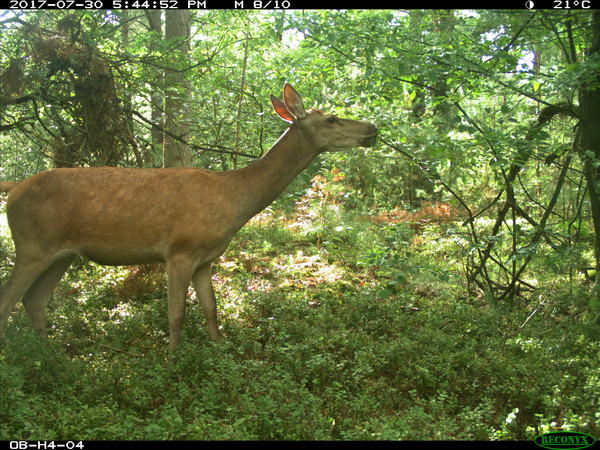Online Citizen Science: A way to get everyone involved in scientific research, including you!
Since May 2018, De Hoge Veluwe National Park has been involving the general public in its scientific research through the online platform “Snapshot Hoge Veluwe”. Our project is inscribed in a wider and innovative social movement of Online Citizen Science which is challenging the traditional boundaries of scientific research.

What is Online Citizen Science?
The concept of Citizen Science (CS) was first founded in the late 1990s and officially entered the Oxford English Dictionary in 2014. The dictionary defines Citizen Science as "scientific work undertaken by members of the general public, often in collaboration with or under the direction of professional scientists and scientific institutions".
Online Citizen Science builds upon the same ideas, but instead of people going into the field and gathering raw data, volunteers are now mostly involved in the processing of data which they can do online from the comfort of their own homes. Everyone is just a click away from science!
What’s new?
The main innovation of CS is the integration of everyday inexperienced people into scientific research, while maintaining a high level of information quality and reliability. As with many other disciplines, the internet has contributed to the blurring of lines between professionals and amateurs, thus democratising scientific research in general by being more inclusive.
Who does it benefit?
Thanks to technological advances, it is now possible to gather large quantities of data at a very quick pace – thanks to our 70 heat-sensitive cameras, we collect more than a million pictures of the wildlife every year! However, raw data has to be processed before it can contribute to any piece of research.
From the perspective of our researchers, CS therefore allows us to outsource the processing of data so we can focus on analysing and interpreting it. The more processed data we get, the more accurate our research will become. The Snapshot project serves to accelerate the speed at which we can draw concrete conclusions from our research: only a year after the launching of Snapshot and we are already beginning to confirm certain hypotheses about:
- General questions: How many animals are in the Park? How do they make use of the different habitat types, such as heathland, game pastures and forest. How does the presence of the animals affect the plants? When are the animals most active? How do they respond to visitor activity?
- Specific questions: How did the introduction of wildlife crossings connecting the National Park with the greater Veluwe area in 2013 affect the wildlife population? How did the decision to keep visitors off the paths in 2016 affect the wildlife population?
Not only does CS facilitate scientific research, it also has many benefits for the wider good. Indeed, it provides a form of free and accessible scientific education while creating a sense of community amongst its participants by fostering common interests and discussion within the project. In our case, the participants of Snapshot learn about the identification of animals as well as animal behaviour and seasonal patterns. People from different backgrounds and levels of experience are joining the Snapshot community but they all have one thing in common: they are nature lovers! Our community is growing stronger through devices like our ‘Talk’ function, where it is possible to share your favourite pictures, ask questions regarding the Park’s wildlife or look for help with trickier classifications. Are you a nature lover as well? Then don’t hesitate to join our Snapshot community!
For more detailed information about the Snapshot project and the research we are conducting, follow this link: https://www.zooniverse.org/projects/y-dot-liefting/snapshot-hoge-veluwe/about/research